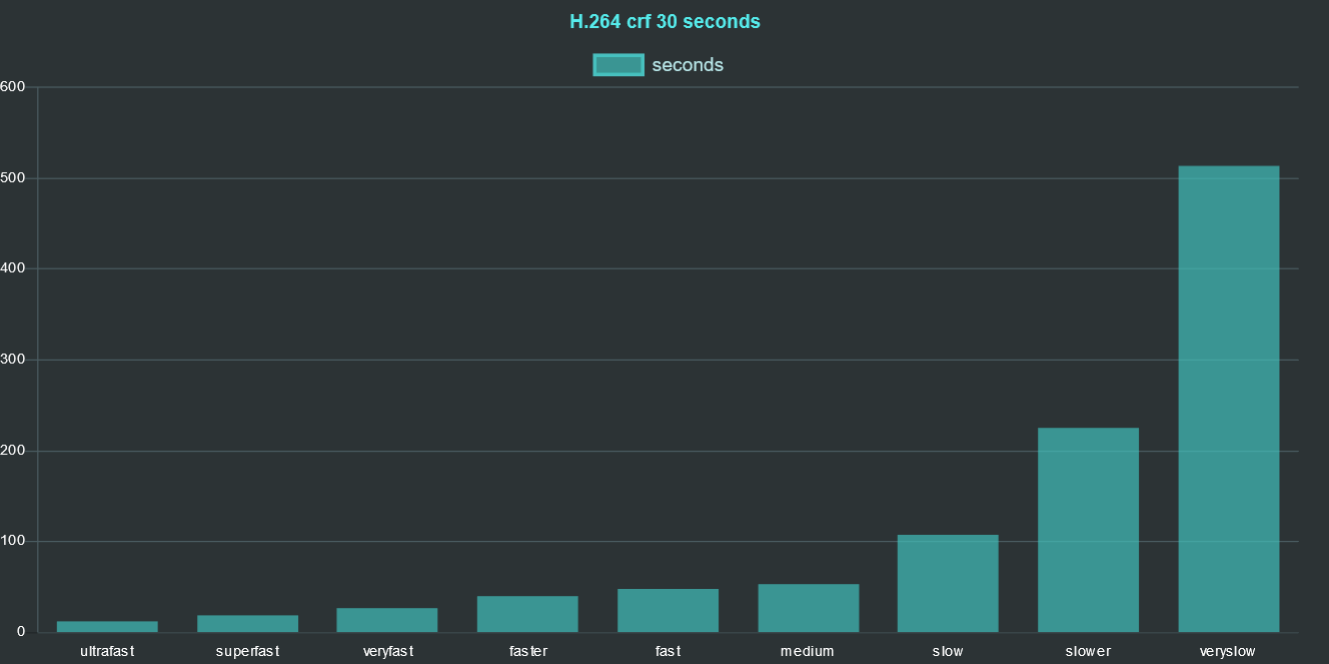
This can generally be omitted unless the target device only supports a certain profile (see Compatibility). You can see a list of current tunings with -tune help, and what settings they apply with x264 -fullhelp.Īnother optional setting is -profile:v which will limit the output to a specific H.264 profile. If you are unsure of what to use or your input does not match any of tunings then omit the -tune option.

For example, if your input is animation then use the animation tuning, or if you want to preserve grain then use the grain tuning. Current tunings include: film, animation, grain, stillimage, psnr, ssim, fastdecode, zerolatency.

You can optionally use -tune to change settings based upon the specifics of your input. You can see a list of current presets with -preset help (see example below), and what settings they apply with x264 -fullhelp. Ignore placebo as it is not useful (see FAQ). Current presets in descending order of speed are: ultrafast,superfast, veryfast, faster, fast, medium, slow, slower, veryslow, placebo. The general guideline is to use the slowest preset that you have patience for. Similarly, for constant quality encoding, you will simply save bitrate by choosing a slower preset. This means that, for example, if you target a certain file size or constant bit rate, you will achieve better quality with a slower preset. A slower preset will provide better compression (compression is quality per filesize). 8-bit is more common among distributors.Ī preset is a collection of options that will provide a certain encoding speed to compression ratio. You can see what you are using by referring to the ffmpeg console output during encoding (yuv420p or similar for 8-bit, and yuv420p10le or similar for 10-bit). Note: The CRF quantizer scale mentioned on this page only applies to 8-bit x264 (10-bit x264 quantizer scale is 0-63). If the output looks good, then try a higher value and if it looks bad then choose a lower value. General usage is to choose the highest CRF value that still provides an acceptable quality. The range is exponential, so increasing the CRF value +6 is roughly half the bitrate while -6 is roughly twice the bitrate. Consider 18 to be visually lossless or nearly so: it should look the same or nearly the same as the input but it isn't technically lossless. A lower value is a higher quality and a subjectively sane range is 18-28. The range of the quantizer scale is 0-51: where 0 is lossless, 23 is default, and 51 is worst possible.

The downside is that you can't tell it to get a specific filesize or not Go over a specific size or bitrate. Each frame gets the bitrate it needs to keep the requested quality level. This provides maximum compression efficiency with a single pass. This method allows the encoder to attempt to achieve a certain output quality for the whole file when output file size is of less importance. If you need help compiling and installing libx264 see one of our FFmpeg and x264 compiling guides. This will determine the file size and also how quality is distributed. The rate control is a method that will decide how many bits will be used for each frame. There are two rate control modes that are usually suggested for general use: Constant Rate Factor (CRF) or Two-Pass ABR.

FFMPEG CRF BITRATE HOW TO
The goal of this guide is to inform new users how to create a high-quality H.264 video using the encoder x264.


 0 kommentar(er)
0 kommentar(er)
